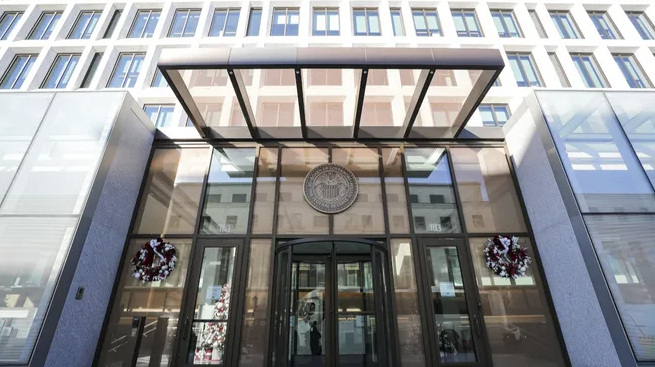Although the strong labor market indicates that the Fed will maintain its hawkish stance on monetary policy, the strengthening expectations that inflation can be brought under control continue to be priced positively in the markets despite the possibility of recession. In the pricing in the markets, an interest rate hike of 75 basis points at the July meeting and at least 50 basis points at the September meeting is considered certain.

Global equity markets followed a positive course as macroeconomic data indicated that the recessionary pressure in economies is not yet as strong as feared and the US Federal Reserve (Fed) maintained its determined stance in the fight against inflation, while eyes turned to the intense data agenda, especially the inflation data to be announced in the US next week.
- German gas group Uniper warns of billions in losses and requests state support
- Kann Deutschland Europa führen?
- Moscow City Councilor criticizing Ukraine war gets 7 years in prison
In the US economy, which is caught between the dilemma of high inflation and recession, the Fed seems to prioritize inflation.
According to data released yesterday, non-farm payrolls in the US increased by 372 thousand people in June, exceeding market expectations, while the unemployment rate remained unchanged at 3.6 percent.
Although the strong labor market indicates that the Fed will maintain its hawkish stance on monetary policy, the strengthening expectations that inflation can be brought under control continue to be priced positively in the markets despite the possibility of recession.
In their statements during the week, Fed officials stated that the risk of recession may not be as strong as feared, while their priority is to bring inflation under control.
Fed Board Member Christopher Waller stated that inflation is too high and does not seem to be easing. St. Louis Fed President James Bullard also said that he expected the US economy to continue growing this year and signaled that he was in favor of a 75 basis point rate hike at the July meeting.
Following the statements of Fed officials and labor market data, the US 10-year bond yield exceeded 3 percent with the increased selling pressure in bond markets, while recession pricing in swap markets weakened, albeit partially.
In money market pricing, a rate hike of 75 basis points at the July meeting and at least 50 basis points at the September meeting are considered certain.
Despite the selling trend in bond markets, the dollar index rose by 1.8 percent to 107.8 after rising to the peak of the last 20 years with 107.8 after inflation concerns and increased demand for dollars as a safe haven.
The barrel price of Brent oil, which fell to 97.2 dollars with recession concerns during the week, decreased by 4.7 percent to 105.5 this week, although it partially compensated for its losses with China’s 220 billion infrastructure package announcement and strong US labor market data.
The ounce price of gold also continued its downward trend for the fourth consecutive week, falling 3.8 percent to $ 1,742 for the week.
The agenda in the US remains busy this week
While equity markets in the US followed a positive course this week, eyes turned to the intense data agenda, especially the inflation data to be announced on Wednesday next week, and the verbal guidance of Fed officials.
While it is estimated that the Consumer Price Index (CPI) to be announced in the country may have risen last month, the course of the CPI is expected to have an impact on asset prices.
In a country where swap markets are already pricing that the country will enter a recession in the next 6 to 18 months, the Fed’s determined stance in the fight against inflation further increases the importance of the CPI data.
According to macroeconomic data released in the US this week, factory orders increased by 1.6 percent in May, while the service sector Purchasing Managers Index (PMI) rose to 52.7.
May foreign trade deficit in the country was 85.5 billion dollars.
With these developments, the S&P 500 index gained 1.94 percent, the Nasdaq index 4.56 percent and the Dow Jones index 0.77 percent on a weekly basis.
Starting July 11, the week’s data calendar will include the Fed’s Beige Book Report and treasury budget balance on Wednesday, the Producer Price Index (PPI) and weekly jobless claims on Thursday, and the New York Fed industrial index, retail sales, capacity utilization, industrial production and Michigan consumer confidence index data on Friday.
Euro/dollar parity hovers at its lowest level in 20 years
While European stock markets followed a buying-heavy course this week, the Euro/dollar parity fell to its lowest level in 20 years after the Fed did not give up its aggressive hawkish stance.
The minutes of the European Central Bank’s (ECB) June monetary policy meeting, released during the week, revealed that the ECB Governing Council discussed the persistence of inflation for a while and a larger interest rate hike in July.
The minutes, which included the assessments of the Council members, revealed that most members agreed to raise key interest rates by 25 percentage points at this month’s monetary policy meeting in an environment of high economic uncertainty.
Some members, however, argued that the ECB should not make an “unconditional commitment” to a 25 basis point hike and advocated “keeping the door open” for a larger rate hike in July.
While the fact that the ECB is not as determined as the Fed for a stronger interest rate hike continues to suppress the Euro / dollar parity, the Euro / dollar parity, which fell to its lowest in the last 20 years with 1.0072 this week, completed the week at 1.0186 with a 2.2 percent loss of value.
On the other hand, British Prime Minister Boris Johnson announced that he resigned from the leadership of the ruling Conservative Party, but will continue to serve as prime minister until a new leader is elected.
According to data released in the region during the week, the investor confidence index in the Eurozone fell to minus 26.4, the lowest level since May 2020, with concerns over the energy crisis, while Germany’s exports fell 0.5 percent in May with weak demand from the European Union.
Germany’s imports increased by 2.7 percent to 126.7 billion euros in May, while the seasonally and calendar adjusted foreign trade balance turned negative for the first time since June 1991, posting a deficit of 1 billion euros.
This week, the FTSE 100 index in the UK gained 0.38 percent, the DAX index in Germany 1.58 percent, the CAC 40 index in France 1.72 percent and the MIB 30 index in Italy 1.97 percent.
Next week, the Zew expectations index in Germany on Tuesday, industrial production in the UK on Wednesday, CPI in Germany and industrial production data in the Eurozone will be followed.
Markets were mixed in Asia
On the Asian side, while China and Hong Kong stock markets diverged negatively in equity markets this week, former Japanese Prime Minister Shinzo Abe, who was armed yesterday, lost his life.
Despite the news flow that tariffs may be lifted between the US and China and China’s announcement of a 220 billion dollar spending package for infrastructure spending, increasing cases of novel coronavirus (COVID-19) in China continued to suppress equity markets.
In Japan, the assassination of former Prime Minister Abe increased uncertainties ahead of the upper house of parliament elections on Sunday.
According to macroeconomic data released in the region during the week, Japan’s leading index fell to 101.4, falling more than expected. In China, the service sector PMI rose to 54.5, its strongest level since July 2021, well ahead of forecasts.
With these developments, the Nikkei 225 index in Japan gained 2.24 percent and the Kospi index in South Korea 1.95 percent on a weekly basis, while the Shanghai Composite index in China lost 0.93 percent and the Hang Seng index in Hong Kong 0.61 percent.
Starting July 11, the data calendar for the week starting with July 11 will be followed by PPI data in Japan on Tuesday, industrial production and capacity utilization in Japan on Thursday, and growth, retail sales and industrial production data in China on Friday.
Stock markets will be open for two days next week in Turkey
In Turkey, while the BIST 100 index in Borsa Istanbul diverged negatively from global equity markets, eyes turned to the industrial production data to be announced on Thursday next week.
Economists participating in the AA Finans expectations survey expect the calendar adjusted industrial production index to increase by 8 percent in May compared to the same period of the previous year.
On the other hand, Borsa Istanbul will be open only on Wednesday and Thursday next week due to the Feast of Sacrifice and July 15 Democracy and National Unity Day.
While the BIST 100 index in Borsa Istanbul completed the week at 2,434.02 points with a 0.40 percent decrease, the dollar/TL appreciated by 3.05 percent to 17.2733.
Analysts noted that 2,460 points will be followed as resistance and 2,380 points as support in the BIST 100 index in technical terms.
Next week, the unemployment rate will also be followed in Turkey on Wednesday.




